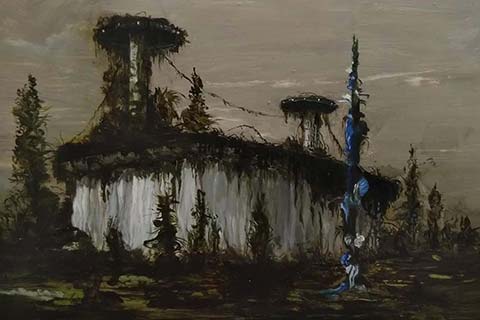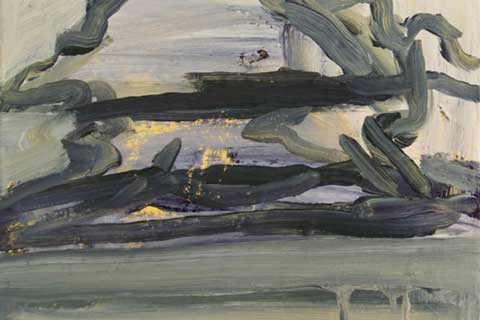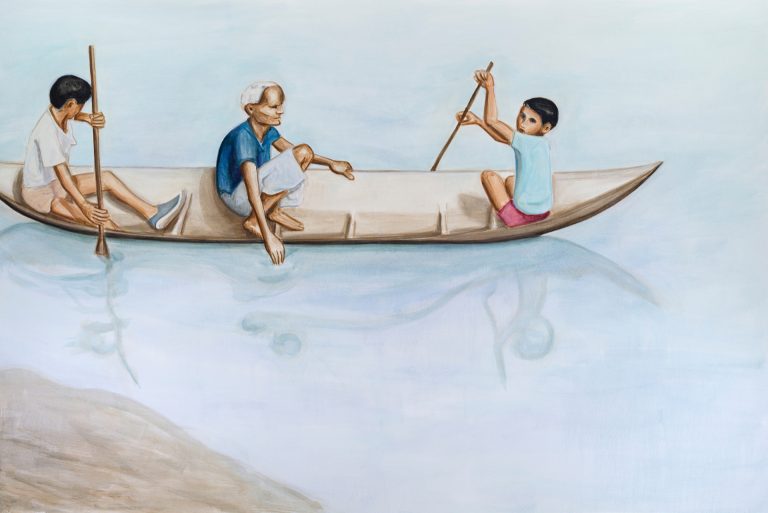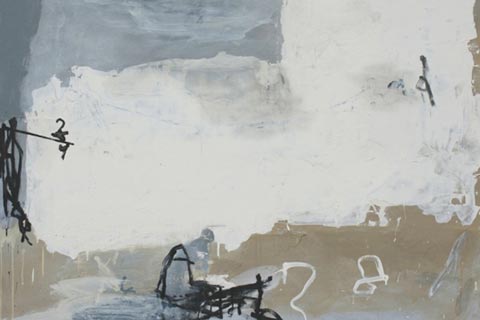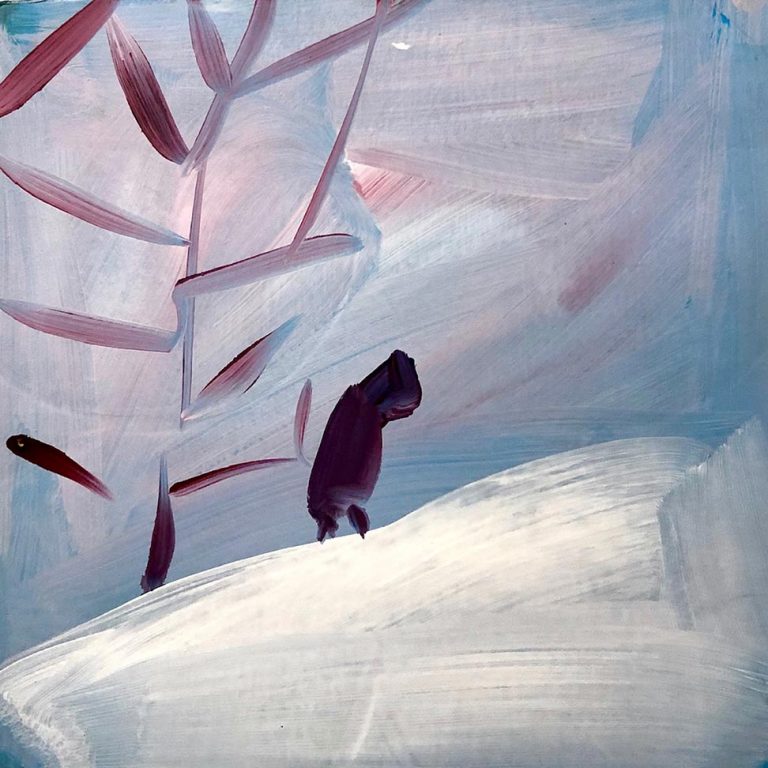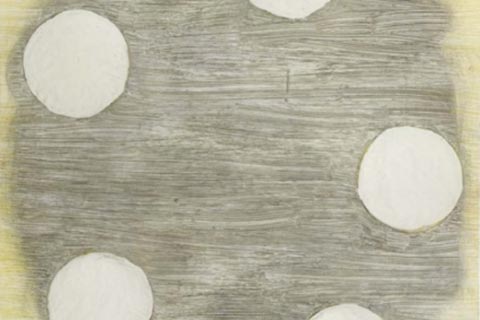Joanna Whittle in conversation with Bryan Eccleshall
Joanna Whittle is a painter based in Sheffield. Joanna studied at Central St Martin’s and the Royal College of Art and her work has been included in the Royal Academy Summer Show (2019) and the John Moores Painting Prize (2018). She recently won (jointly) the Harley Gallery Open Prize and the Contemporary British Painting Prise (both 2019). Her work is exhibited widely and is held in many collections. Joanna was recently awarded one of five career development bursaries granted by the Freelands Foundation in conjunction with Site Gallery in Sheffield.
Bryan Eccleshall is an artist and an OCA tutor. He has a a studio at Bloc in Sheffield and is also part of the Prosaic curating collective.
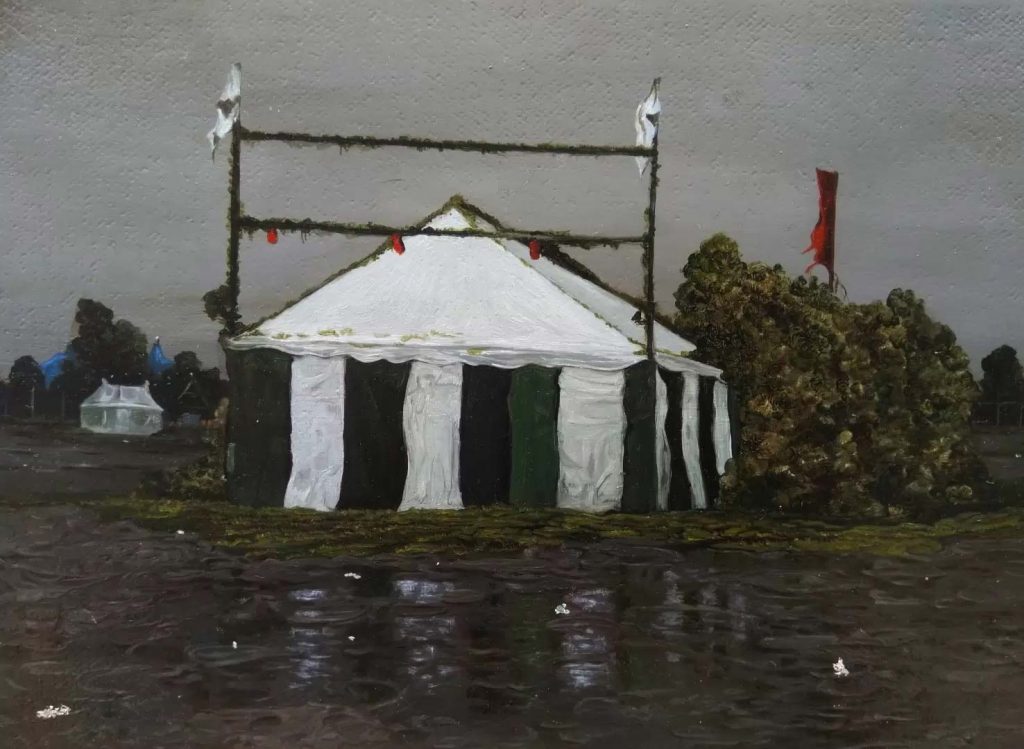
Bryan Eccleshall: When approaching your work I’m struck by its size. It’s small and detailed, which draws the viewer towards it. Have you always worked like this?
Joanna Whittle: I used to make work on a much larger scale – engaging the viewer in a bodily way. Gradually the paintings became smaller, leading to a different painting language. The reduction in scale changes how objects and landscapes are described. It is not a matter of scaling things down – as things become smaller illusionary language becomes more intensified whilst moments of plasticity are reduced. By which I mean, the painting surface becomes less solid- the viewer peers in and the world opens up like a hallucination – the weight of the paint falls away. It’s plasticity, its three dimensional pigmented form become less stable. Yet equivalently – as a painter, as someone who has chosen to use this three dimensional substance, I am interested in the tension that exists between the material and the illusion and the moments where this is intensified and the viewer is drawn back to the painted surface.
BE: There’s an irony in that what you tend to depict – marquees, big tops, or architectural subjects – are large enveloping things but the pieces themselves are intimate.
JW: The scale of the paintings express intimate relationships with spaces and landscape and the structures within them. It is by reducing this scale that this intimacy seems intensified and large structures become part of this intimate dialogue. Making a large painting of a large structure ultimately expresses a failure along the way. I think Whiteread’s House reminded us of this – making those intangible elements and essences of what makes a space… solid. Painting can’t do that – but it can do something else, in a different language and the viewer is an intrinsic part of that dialogue.
BE: How did you arrive at the motifs use?
JW: As a landscape painter, I have always included structures within the paintings. These are clear signifiers of history and operate within a different discourse than untouched landscapes – where nature is the protagonist. I have long been interested in notions of the romantic ruin and the relevance of picturesque themes in contemporary painting. In this pursuit I made work focusing on dereliction as a representative of the ruin, focusing on crumbling brick and rusting metal. I became interested in tents and temporary structures when I began working at festivals. I wanted to explore how these transient structures would operate when slowed down and allowed to remain in one place. When thought of as places they bring up a number of themes, of fragility, of impermanence. I also like the way they conceal things- fragile yet ominous.
BE: You write that the work captures ‘small moments of uncertainty’. Can you expand on that a little, especially in the way that the material qualities of the work fixes the temporary structures you depict.
JW: Working to such a high illusionistic level leads the viewer to assume a certain degree of reality. However small moments in the painting undermine the certainty of the scenes described. Tents are pegged in to mud or water, lights are lit on derelict structures and the time of day is often uncertain. And whilst these are highly described scenes there are also moments of materiality which bring the viewer back to the surface of the painting. The more involved the viewer becomes in the painting, the more it falls away and opens out in to different narratives whilst flickering between illusion and materiality.
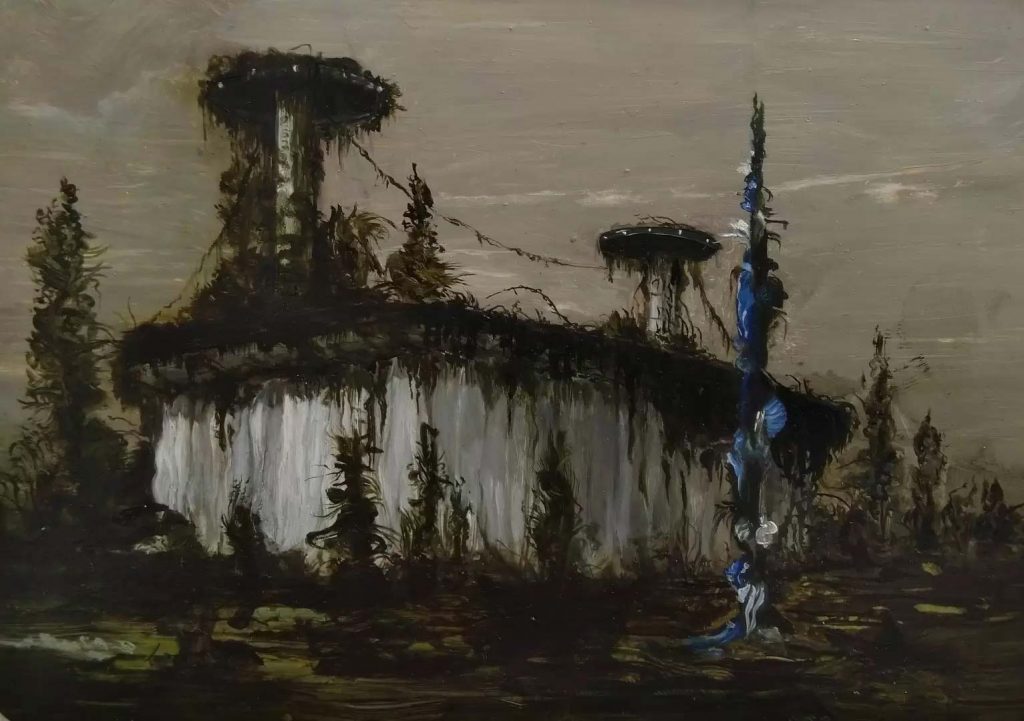
BE: Tell me a little about the mechanics of the paintings you make.
JW: The paintings are made using traditional oil painting techniques of indirect painting – i.e. multiple layers of translucent and semi opaque layers combine to make the final image. I find that, for my purposes, this gives depth and enhances illusionary qualities whilst undermining the flat surface of the painting- making its reinstatement through more direct painting more compelling. Preparing the surface before painting becomes very important in this dialogue and I often feel this aspect of painting is overlooked or rushed- but the ground holds the whole basis of the painting. Paying attention to the surface one paints on and its preparation underpins the whole work.
BE: Does the work evolve from drawings? Do sketchbooks play a part in the process?
JW: As the paintings are made from several elements I use drawing to deal with compositional issues and also to find out if I can commit myself to a painting which may take over a month to complete. These are just investigatory and preparatory sketches. I also draw out the paintings on the ground and can make many revisions at this stage. I never grid out the work or make exact copies of the drawings- the painting becomes an evolving process. I do use sketchbooks – but these are more for making notes and occasional sketches.
BE: Finally, are there any artists you feel your work emerges from?
JW: I think my work emerges from a discourse with the history of landscape and the wider language of painting. I think it can be difficult to define the provenance of one’s way of working – again like the paintings – it evolves from a series of experiences and decisions – an accumulation of paintings seen and paintings made. That said I think I have always had a love of paintings or other practices that differ from my way of making – that communicate in a different way – such as Philip Guston or Georg Baselitz … or Joseph Beuys and many other artists who are making work now. I think by engaging with difference you inform your practice more than through engaging with work that validates it.
Interview first published on the Open College of the Arts website December 2019.



